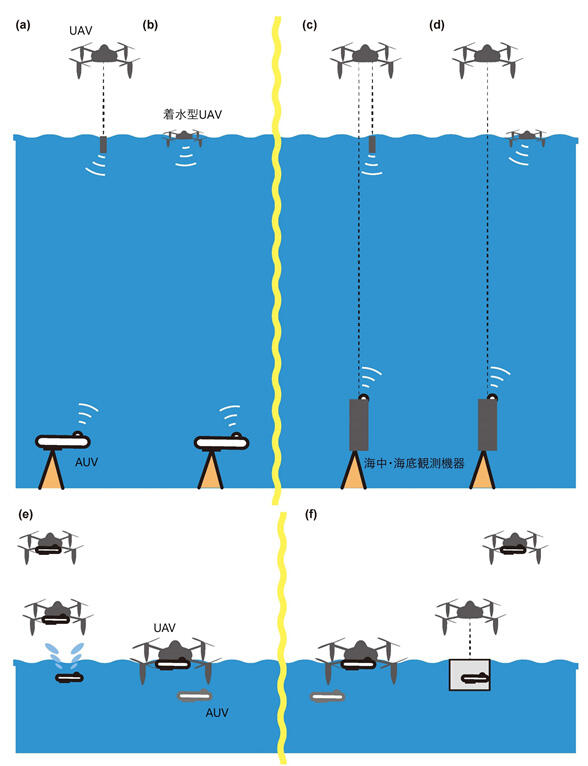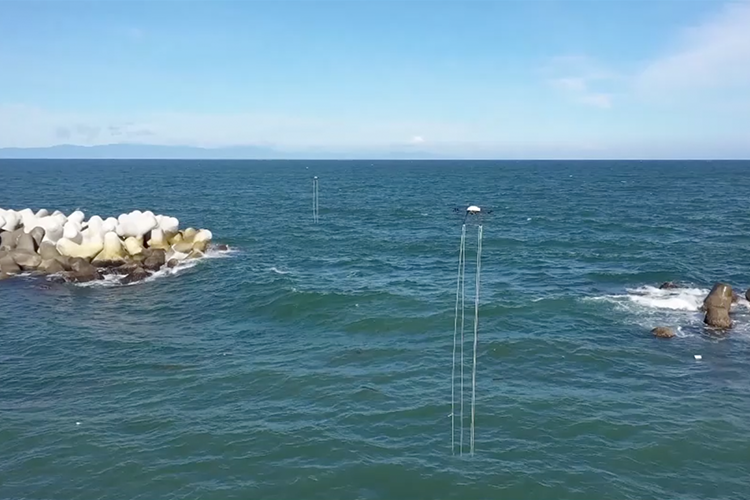

University of Tokyo: Drone communicates with submarine exploration AUV:
~ Highly efficient underwater and seafloor observation by UAV ~
University of Tokyo
Institute of Industrial Science
Underwater Observation and Implementation Engineering Research Center
Announcement points:
◆ Conventionally, utilization of ships
Carry underwater and seafloor observation equipment to the site
As a sea level base for communicating information with equipment
So far, ships have been used.
However, there is a problem that the cost is high and the mobility is low.
◆ Utilization of drone this time
We provided observation equipment support by drone.
Significantly reduced cost and time compared to ships
The accuracy of sea level positioning is also high,
It was also found that underwater acoustic noise was also reduced.
Communication with underwater / undersea AUV:
In this research, communication with underwater and seafloor observation equipment such as AUV, and
We conducted a work test as a mother ship.
Communication between UAVs:
Communicate between sea-level UAVs in the coastal area
We have confirmed that 200m communication has been achieved.
The accuracy of holding the aircraft and
In terms of low underwater acoustic noise,
It turned out to be superior to the operation of equipment by ship.
Institute of Industrial Science, University of Tokyo
https://www.iis.u-tokyo.ac.jp/ja/news/3680/
Remote Sensing | Free Full-Text | Underwater Communication Using UAVs to Realize High-Speed AUV Deployment
Abstract
To monitor ocean and seafloor properties in detail, sensors are generally installed on autonomous underwater vehicles (AUVs).
An AUV cannot accurately determine its absolute position and needs to communicate with a sea-surface vehicle.
However, sea-surface vehicles
cannot perform high-speed observations with high efficiency due to their low mobility and high labor and equipment costs, e.g., vessel charter charges, operator restraint time on the sea surface during observations, etc.
From this perspective,
unmanned aerial vehicles (UAVs) have potential as the next-generation communication platform.In this study,
we conducted a demonstration experiment to use UAV as a sea-surface base for underwater communication with an AUV.We investigated the capability of a UAV to land on the sea surface,
drift like a buoy to receive underwater data, and finally lift off to return to its base.
The experimental results suggest that
UAVs provide suitable communication performance for research near the shore in terms of robust hovering control, stability against sway, and operation speed.
To carry out more complicated work (such as transportation) of UAVs, further research in areas such as weight reduction is required.
https://www.mdpi.com/2072-4292/13/20/4173
Can communication-linked UAVs become AUVs’ BFFs?
Researchers in Japan are testing
whether the deployment of autonomous underwater vehicles (AUV) for research
can be significantly enhanced by pairing them with communication-linked UAVs hovering overhead to relay data to human monitors on the ground.
The recent tests determined that
UAVs hovering above the submarines provide similar communications capacities as surface-floating vessels, but with far greater speed, stability, and agility capacities.
Our results suggest that
because of their robust hovering control, stability against sea-surface sway, and operation speed,
UAVs may be a suitable communication platform with AUVs in ocean surveys
up to a distance of approximately one kilometer from the shore
DroneDJ
https://dronedj.com/2021/11/01/can-communication-linked-uavs-become-auvs-bffs/